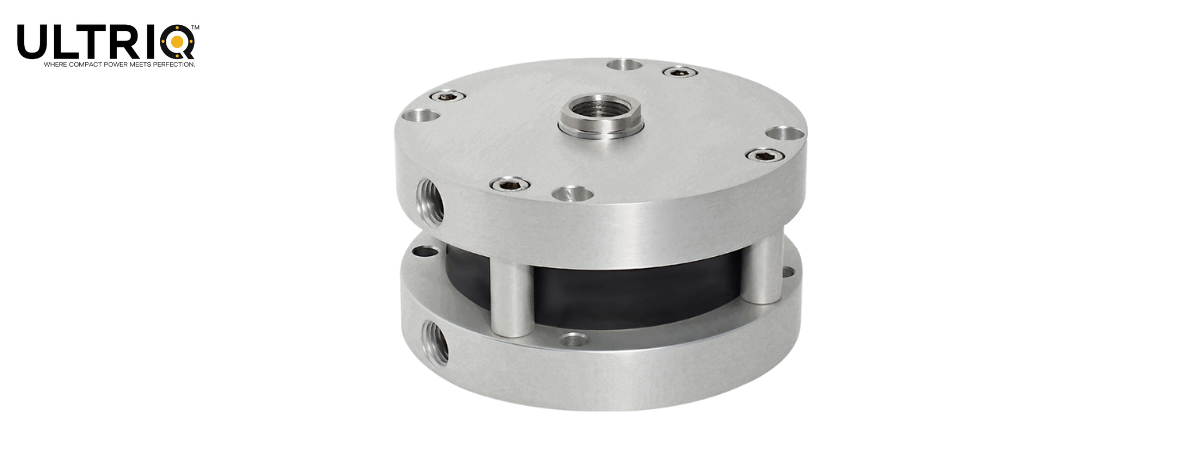
Pancake versus standard air cylinders – how are they different, and which type should you use? For engineers, the two most significant factors to consider are needed travel distance and the amount of force required to perform the linear movement – open, close, lift, lower, push, slow, stop.
The pancake cylinder is a rodded actuator, but it has a shorter, flatter shape that makes it more compact. This gives engineers a versatile option that fits efficiently even where space is limited.
How Pancake Cylinders Work
Bore size and stroke length work together to produce the force required for actuation. The force from air or hydraulic pressure on the piston area is calculated in pound force. Changing either bore size or stroke length affects results, so engineers need to identify the most efficient balance.
Standard rod or rodless cylinders usually have a small bore compared to their stroke length. Pancake cylinders reverse that ratio. So, instead of a long travel (stroke), the shorter pancake style has a large bore so it can deliver more available force with a shorter stroke.
Single-acting pancake cylinders produce pressure on either side of the piston to extend or retract. They can use external force for the counter stroke or spring action to return the piston. For example, if there is something external pulling on the rod to maintain tension, then you can pressurize the front side to retract the rod and return it. Of course, the pressure has to be stronger than the external pulling force to effectively counter it.
As a practical example, suppose your assembly line uses a welding jig to hold a piece in place while another piece is welded to it. A pancake cylinder can provide the holding pressure, then when it is released the now-joined piece can be removed from the jig.
Simple, Reliable, Versatile
Compact cylinder design principles allow us to create our ULTRIQTM line of pancake cylinders that can achieve desired performance even though the design is simple. In fact, it is one of the simplest cylinders available because it has fewer components. The cylinder’s design does limit its size, so it’s not necessarily practical in applications that require longer actuation distance. For example, if you need 12-inch linear movement to close a door, a pancake cylinder may not be sufficient.
There are other types of pneumatic compact cylinders. However, they typically have a smaller bore so they cannot produce as much force as the pancake cylinder, which is specifically designed to deliver maximum force in a small-stroke area.
Simple design also makes pancake cylinders very reliable, especially in the double-acting configuration where the piston and rod have two heads and there is one port for extension and another for retraction.
Pancake cylinders may be small, but they are mighty when it comes to versatile application. Our ULTRIQTM series supports multiple design configurations:
- Stroke and bore sizes
- Single or double acting
- Male or female rod
- Optional spring extension/retraction
- Accessories such as clevis can be attached
- Mounting options
No-Delay Solution
Even the best possible cylinder won’t help if you can’t get it quickly when you need it. That matters for drawing-board design purposes, but it is mission-critical for operations that are up and running because production delays can be catastrophic.
Branham has your back here. We’re a US-based manufacturer. Our ULTRIQTM products can be used to replace other brands, and we maintain ready inventory of the most commonly needed pancake cylinder options. We typically ship within a week.
You can learn more about all of our pancake cylinder options by consulting our pneumatic actuator selection guide.


